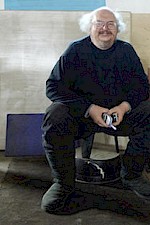It's About Time!
“A loudspeaker apparatus is provided for producing time and phase-coherent sound waves…” is the beginning of my patent application filed on August 7, 1981. I have used Walsh speakers to demonstrate the benefits of time coherence ever since: naturalness of voices, imaging, wide Sweet-Sweep© and the accuracy of acoustic instrument reproduction. Others may feel that timing is not the sole cause of these benefits, but I feel timing – the perception of sound sequences – is a necessary requirement.
Timing, Timing, Timing!
I have been pushing this concept for over 35 years. It is nice when scientists studying hearing from a very different perspective discover “…that our brains care a great deal about timing.”
Researchers Jacob Oppenheim and Marcelo Magnasco, of New York’s Rockefeller University published in 2013 an article about our brains ability to detect small differences in spectral and timing. Lisa Zyga wrote about their work the same year. In Zyga’s article, Magnasco said, “We were still extremely surprised by how well our subjects did, and particularly surprised by the fact that the biggest gains appear to have been, by and large, in timing. You see, physicists tend to think hearing is spectrum. But spectrum is time-independent, and hearing is about rapid transients. We were just told, by the data, that our brains care a great deal about timing.”
In their research, Oppenheim and Magnasco discovered that the subjects exceeded expectations – soundly. Further, their research demonstrates that the ability may be teachable. Musicians were clearly more accurate in their assessments than non-musicians. And that goes back to a discussion we had some time ago on whether ears can be trained.
Oppenheim and Magnasco have done some very interesting tests and I am looking forward to their future findings as they teased us with, “We have indications that the hearing system is highly attuned to the sounds you actually hear in nature, as opposed to abstract time-series; this comes under the rubric of ‘ecological theories of perception’ in which you try to understand the space of natural objects being analyzed in an ecologically relevant setting, and has been hugely successful in vision.”
Plus, they promised, “We are also studying with these same methods the notion of simultaneity of sounds. If we’re listening to a flute-piano piece, we will have a distinct perception if the flute ‘arrives late’ into a phrase and lags the piano, even though flute and piano produce extended sounds, much longer than the accuracy with which we perceive their alignment. In general, for many sounds we have a clear idea of one single ‘time’ associated to the sound, many times, in our minds, having to do with what action we would take to generate the sound ourselves (strike, blow, etc).”
Oppenheim and Magnasco concluded that the frequency-dominated fields of audio processing and measurement have too long neglected the time domain. Our brain-ear audio analyzer, we have seen, is possibly more sensitive to time differences than it is to differences in pitch.
Ohm speakers are among the very few on the market that fully take advantage of the dominance of timing in human psychoacoustics. We’ve made it the gold standard of our products for 35 years because the benefits are so easy to hear. Thanks to contemporary science, we’re now closer to understanding why.
If you’re interested in sound and how we hear it, the research is fascinating. For an extremely readable and understandable account of their investigation, take a look at Zaya’s article: http://phys.org/news/2013-02-human-fourier-uncertainty-principle.html#jCp
This is meaty stuff, well worth chewing through.
Hear for yourself.
The Walsh 1000s will be performing their best at the New York Audio Show, November 4-6 at Manhattan’s Park Lane Hotel. Stop by and hear the benefits of time and phase-coherent sound!
Until then,
Enjoy and Good Listening! John
Subscribe to Ohm News & Views to get the latest posts in your inbox
John Strohbeen Author
John Strohbeen was the founder and president of Ohm Speaker.


